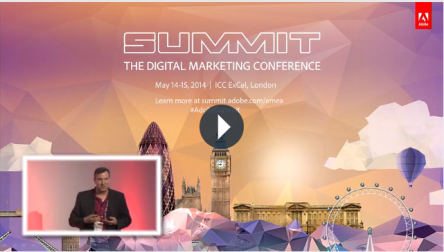Customers have multiple options to choose from and what sets you apart is the experience you provide them during each interaction they have with your brand. According to a recent survey, 63% of companies have seen an improvement in customer satisfaction following a digital transformation in their business. So the question of the hour is: What is your Digital transformation strategy to ensure that you stay ahead of your competition and provide your customers with great experiences during every interaction?
Let’s trace back to understand how digital is taking over to modern customer’s decision making process.
With ubiquitous availability of Internet and proliferation of smart electronic devices, the consumer world is using technology like never before. As it becomes all pervasive in day to day life, enterprises are facing tremendous pressure to make ‘digital’ an integral part of their growth strategy.
Companies no longer have a choice about whether or not to go digital. They might as well ask themselves whether or not they want their business to survive. While older players are trying to see how they can update their legacy systems and re-jig their processes in order to support their digital strategy, they have to compete with newer players who are born in the digital era and are disrupting the marketplace.
Let’s take the case of Uber, for example, successfully disrupted the intra-city transport markets globally by coming out with a model that works solely on the popularity of smartphones. Uber enables cab bookings through a text message or using the Uber mobile App. The App also allows users to track the location of their reserved cab. Despite some minor regulatory hiccups and widespread protests from traditional cab companies, Uber today operates from 37 countries and is growing steadily. The traditional cab industry is still trying to catch-up.
Airbnb is another excellent example. The online rental and lodging facilitator has 500,000 listings in 33,000 cities and 192 countries, giving traditional hotels a run for their money.
On the other hand, Nestle is a good example of a traditional company using digital to its advantage. Below is a video of Pete Blackshaw, Nestlé’s Global Head of Digital & Social Media speaking at the Adobe Summit 2014.
The growing pressure on enterprises to go digital is coming from customers and employees alike. Customers are increasingly demanding uniform engagement across various channels, offline and online. Likewise, employees expect to be able to work seamlessly anytime, anywhere and on any device.
Competitiveness of business is, of course, the major factor. According to a 2014 survey on digital transformation, 53% of companies are facing challenges in understanding digital customer behavior. This relates closely to increases in the pace of changing businesses. Overcoming this and gaining a deeper understanding of the customer enables organizations to gain significant footfall in the process of making the digital transformation.
Companies that are utilizing digital technologies most effectively are seeing phenomenal benefits. There is often a marked transformation not only of their own operating processes but also in the way they engage with customers and employees, which in turn results in better growth and profits. Social media, mobility, analytics and cloud (SMAC) enable enterprises to have unprecedented insights into customer behavior, industry trends and inventory management to name a few. This coupled with great design and engaging user experience brings a sense of brand loyalty and customer retention.
The five point business process for digital transformation:
- Successful digital transformation does not simply mean implementing new technologies. Rather, it means transforming your organization to take advantage of the possibilities that these technologies bring. It means reshaping the organization to take advantage of valuable existing strategic assets in new ways
- Companies can do much more to gain value from investments they have already made, even as they envision radically new ways of working. Companies need to make the shift from a system of records to systems of engagement allowing them to have a single unified conversation with their customer. Systems of engagement allow companies to stay beside their customer through every step decision making and purchase journey, by providing customized and personalized experiences to their customers.
- Major digital transformation initiatives are centered on re-envisioning customer experience, operational processes and business models. Companies are changing how functions work, redefining how functions interact, and even evolving the boundaries of the firm.
- Before you embark on a digital transformation journey, first think hard about your vision as a company and understand which digital initiatives will help take you closer to the goal. Then invest in those digital initiatives and skills within the organization. This could mean anything ranging from better customer engagement or employee initiatives to rejigging operational processes. Ensure a reasonable timeframe to begin seeing results of your efforts. There is usually a lead time between implementing technology and seeing the rewards.
- The key to successful digital transformation is to view it in a holistic manner as a company transformation rather than merely as technology upgradation. To achieve the best results, the CIO needs to view himself not just as a technology driver, but as a change driver for the entire business.
The time is now. Change is inevitable and taking the first step to digital transformation is the neo-modern approach of engaging with your customers better. Know them, understand what they are looking for, engage with them better. Make your customers your champions.



